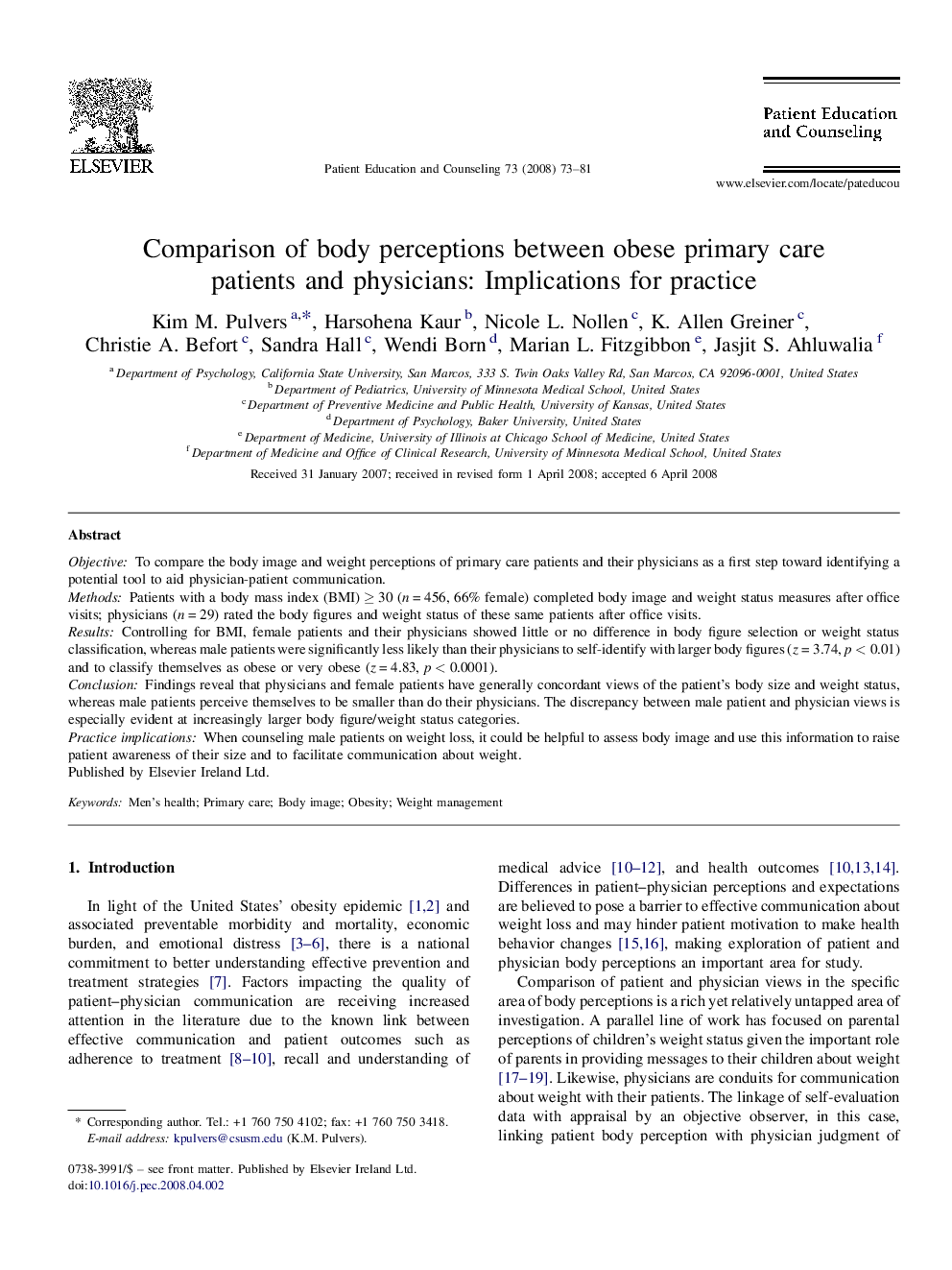| Article ID | Journal | Published Year | Pages | File Type |
|---|---|---|---|---|
| 3815069 | Patient Education and Counseling | 2008 | 9 Pages |
ObjectiveTo compare the body image and weight perceptions of primary care patients and their physicians as a first step toward identifying a potential tool to aid physician-patient communication.MethodsPatients with a body mass index (BMI) ≥ 30 (n = 456, 66% female) completed body image and weight status measures after office visits; physicians (n = 29) rated the body figures and weight status of these same patients after office visits.ResultsControlling for BMI, female patients and their physicians showed little or no difference in body figure selection or weight status classification, whereas male patients were significantly less likely than their physicians to self-identify with larger body figures (z = 3.74, p < 0.01) and to classify themselves as obese or very obese (z = 4.83, p < 0.0001).ConclusionFindings reveal that physicians and female patients have generally concordant views of the patient's body size and weight status, whereas male patients perceive themselves to be smaller than do their physicians. The discrepancy between male patient and physician views is especially evident at increasingly larger body figure/weight status categories.Practice implicationsWhen counseling male patients on weight loss, it could be helpful to assess body image and use this information to raise patient awareness of their size and to facilitate communication about weight.
